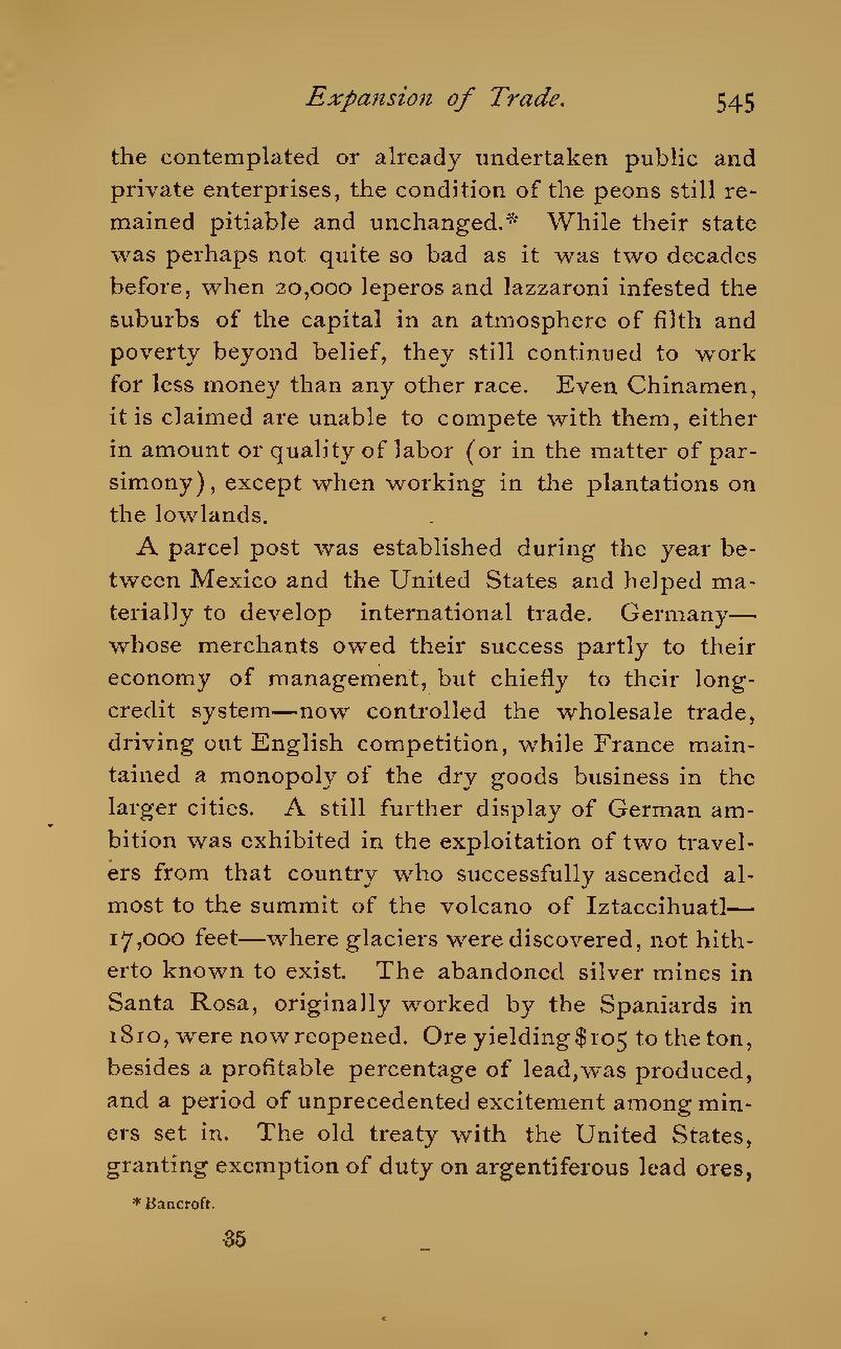the contemplated or already undertaken public and private enterprises, the condition of the peons still remained pitiable and unchanged.[1] While their state was perhaps not quite so bad as it was two decades before, when 20,000 leperos and lazzaroni infested the suburbs of the capital in an atmosphere of filth and poverty beyond belief, they still continued to work for less money than any other race. Even Chinamen, it is claimed are unable to compete with them, either in amount or quality of labor (or in the matter of parsimony), except when working in the plantations on the lowlands.
A parcel post was established during the year between Mexico and the United States and helped materially to develop international trade. Germany—whose merchants owed their success partly to their economy of management, but chiefly to their long credit system—now controlled the wholesale trade, driving out English competition, while France maintained a monopoly of the dry goods business in the larger cities. A still further display of German ambition was exhibited in the exploitation of two travelers from that country who successfully ascended almost to the summit of the volcano of Iztaccihuatl—17,000 feet—where glaciers were discovered, not hitherto known to exist. The abandoned silver mines in Santa Rosa, originally worked by the Spaniards in 1810, were now reopened. Ore yielding $105 to the ton, besides a profitable percentage of lead, was produced, and a period of unprecedented excitement among miners set in. The old treaty with the United States, granting exemption of duty on argentiferous lead ores,
- ↑ Bancroft.
